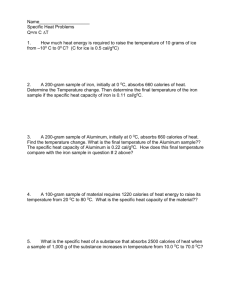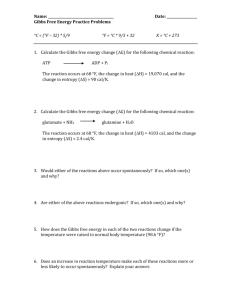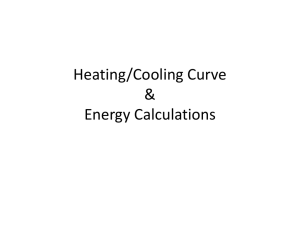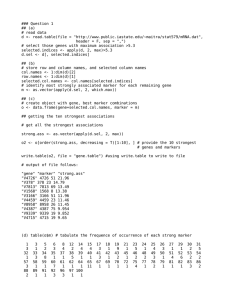Heat Change calculations worksheet
advertisement
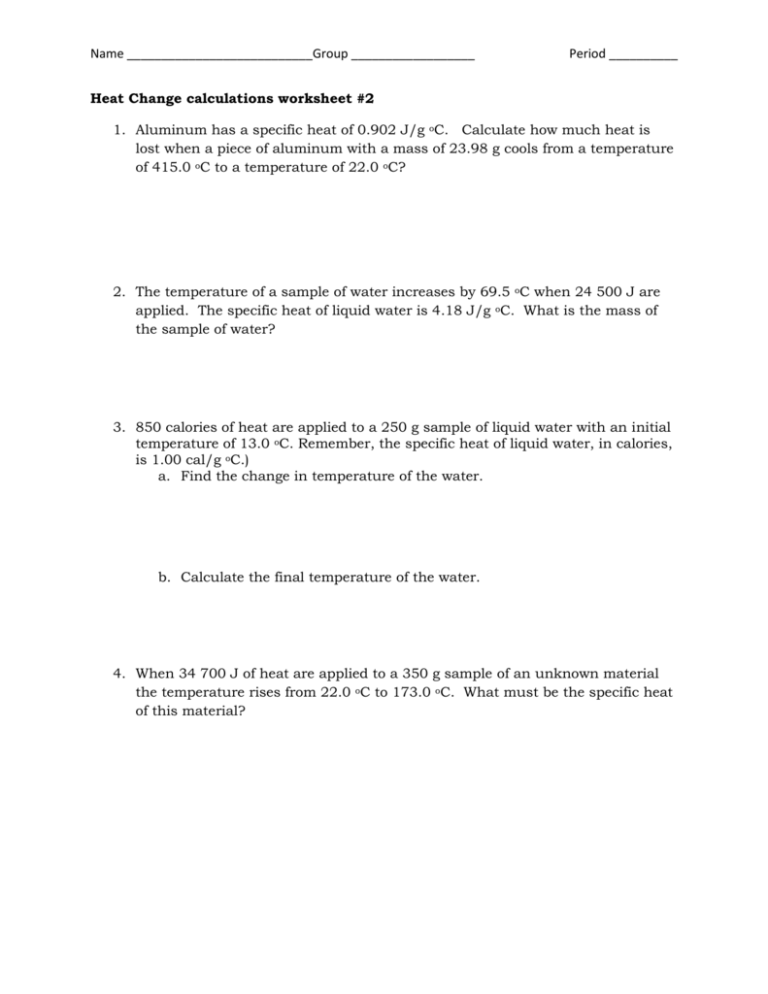
Name ___________________________Group __________________ Period __________ Heat Change calculations worksheet #2 1. Aluminum has a specific heat of 0.902 J/g oC. Calculate how much heat is lost when a piece of aluminum with a mass of 23.98 g cools from a temperature of 415.0 oC to a temperature of 22.0 oC? 2. The temperature of a sample of water increases by 69.5 oC when 24 500 J are applied. The specific heat of liquid water is 4.18 J/g oC. What is the mass of the sample of water? 3. 850 calories of heat are applied to a 250 g sample of liquid water with an initial temperature of 13.0 oC. Remember, the specific heat of liquid water, in calories, is 1.00 cal/g oC.) a. Find the change in temperature of the water. b. Calculate the final temperature of the water. 4. When 34 700 J of heat are applied to a 350 g sample of an unknown material the temperature rises from 22.0 oC to 173.0 oC. What must be the specific heat of this material? Name ___________________________Group __________________ Period __________ 5. Calculate the total heat energy (in cal) that is required to cool 127 g of water vapor from 125˚C to ice at -15˚C. Remember ΔH vap = 540 cal/g, ΔH fus = 80 cal/g, C vapor = 0.4 cal/g oC, C water = 1.0 cal/g oC, C ice = 0.5 cal/g oC. 6. A student wanted to determine the specific heat capacity of an unknown metal, X. She heated the metal in hot water and then immediately transferred it to 150 ml of cold water. The temperature change of the cold water was recorded. Here lab data is shown below: Table 1 – Determination of Specific Heat Capacity of Unknown Metals Start temp. of Start temp. End temp. of Substance Mass (g) O substance ( C) of cold water substance and (OC) water (OC) 26.2 X 72 g 92.3 ˚C 24.0 ˚C ˚C a) Complete the results table below for substance X. Table 2 – Calculations of Specific Heat Capacity of Unknown Metals Substance Temp. Heat Mass of Temp. change of absorbed substance change of water (OC) by water (g) substance (lost by (OC) substance) (cal) X Specific heat capacity of substance (cal/g•OC)






